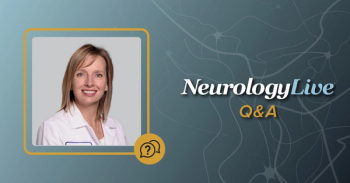
Ganaxolone Meets Primary End Point in CDKL5 Deficiency Disorder Study
Marinus Pharmaceuticals’ positive allosteric GABAA receptor modulator ganaxolone was associated with significant median reductions in 28-day major motor seizure frequency compared to placebo.
Marinus Pharmaceuticals has announced positive top-line results of its registrational phase 3 MARIGOLD clinical trial (NCT03572933) of
All told, those treated with the positive allosteric GABAA receptor modulator showed a significant median reduction of 32.2% in 28-day major motor seizure frequency in comparison to a 4.0% reduction for those in the placebo group, which achieved the primary end point (P = .002). Marinus is planning to present the top-line results at an upcoming scientific meeting.
“The MARIGOLD Study has 2 important firsts. It’s the first double-blind placebo-controlled study providing evidence of efficacy specific to CDD and the first phase 3 trial to examine 3 times a day dosing of ganaxolone in pediatric patients,” said Scott Braunstein, MD, chief executive officer, Marinus Pharmaceuticals, in a statement. “We believe we are 1 step closer to providing the first treatment indicated for CDD, and plan to continue our investments in the oral ganaxolone franchise.”
Based on these results, the company noted it anticipates submitting a new drug application(NDA) for ganaxolone in the treatment of CDD to the FDA in mid-2021 and a Marketing Authorization Application (MAA) for ganaxolone for the treatment of CDD to the EMA by the end of the third quart of 2021. Previously, Marinus
The MARIGOLD trial’s primary efficacy end point assessed the percentage change in 28-day frequency of major motor seizures during the double-blind phase relative to the prospective baseline period. The trial enrolled 101 children and young adults aged 2 to 21 years with a confirmed, disease-related CDKL5 gene variant. Following thee 6-week baseline period, trial participants were randomized to receive either oral ganaxolone (dosed up to 1800 mg per day) or placebo for 17 weeks, in addition to their existing anti-seizure treatment. Following the double-blind phase, patients were eligible to continue receiving ganaxolone in an open-label extension.
WATCH NOW:
“CDD is a severe genetic epilepsy that can cause hundreds of seizures for patients each day,” Scott Demarest, MD, principal investigator, and assistant professor of pediatrics-neurology, University of Colorado, said in a statement. “Existing antiepileptic medications fail to produce an adequate and durable response in the majority of patients. The positive results from Marinus’ trial demonstrate that ganaxolone can provide significant seizure reduction in patients with CDD, an important advance for the CDD community.”
The trial data also revealed numerical trends in favor of ganaxolone across several predefined secondary end points, though the agent did not achieve statistical significance. Ganaxolone did, however, meet statistical significance in some exploratory secondary end points.
As for safety, ganaxolone was considered generally well-tolerated, with a safety profile consistent with has been observed in prior clinical studies. The most frequent adverse event (AE) reported was somnolence.
“Today’s success with ganaxolone in CDD will pave the way for us to accelerate our clinical studies in tuberous sclerosis complex and possibly other rare pediatric epilepsies as well,” said Joe Hulihan, MD, chief medical officer, Marinus Pharmaceuticals, said in a statment. “We will continue to explore the potential for ganaxolone’s unique mechanism of action to address other areas of unmet medical need.”
Marinus noted that it plans to launch an Expanded Access Program (EAP) in the fourth quarter of 2020, which will allow patients who were not able to participate in the clinical trial to begin receiving treatment with ganaxolone under a treatment protocol.
REFERENCE
Ganaxolone Achieves Primary Endpoint in Phase 3 Trial for CDKL5 Deficiency Disorder (CDD), a Rare Form of Genetic Epilepsy. News release. Radnor, PA. Marinus Pharmaceuticals. Published September 14, 2020. Accessed September 18, 2020. biospace.com/article/releases/ganaxolone-achieves-primary-endpoint-in-phase-3-trial-for-cdkl5-deficiency-disorder-cdd-a-rare-form-of-genetic-epilepsy
Newsletter
Keep your finger on the pulse of neurology—subscribe to NeurologyLive for expert interviews, new data, and breakthrough treatment updates.



























